Summer 2022 Showcases Climate Crisis On Full Display
We need climate action, now more than ever.
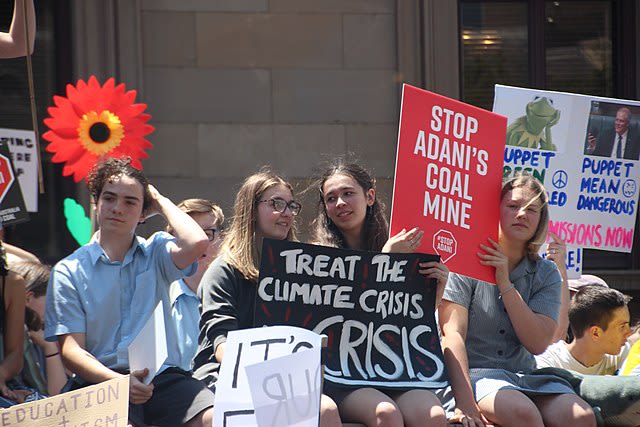
A city in disarray. A region flooded to the brim. A continent begging for rain and relief. These became common images during the summer of 2022. News reports flickered each night with the latest on generational droughts and record-breaking deluges. And while President Joe Biden signed a major climate bill into law, one political faction seems determined to upend climate action, if they hold the congressional majority in early 2023.
We need climate action, now more than ever.
The latest climate issue? Mississippi’s capital, Jackson, fell into a water crisis. In late August after flooding, the city saw a significant drop in water pressure, leading to Jackson residents without potable water. Jackson’s Mayor Chokwe Antar Lumumba told NPR that the flooding “created problems with treating water,” at the main water-treatment facility, the O.B. Curtis Water Plant.
The water pressure is now normal, and the city still recommends that Jacksonians continue to boil their water to ensure safety.
One reason such a catastrophic crisis occurred was the deteriorating infrastructure in Jackson.
The state of Mississippi knew about the issues Jackson had with their water supply. “We’ve actually been lifting up our persistent water challenges for the better part of two years, crying out for any assistance that we could get,” Mayor Antar Lumumba said.
However, Mississippi’s legislature repeatedly denied help. Andre M. Perry told the Washington Post last summer, “Anyone who thinks Mississippi will change the very consistent practice of not investing in Black people, they’re delusional.” Most of the Mississippi legislature is white, while the city of Jackson is predominantly Black.
Environmental racism is a major issue on activists’ minds, and Jackson only amplifies the concern. Everyone deserves clean water to drink and bathe with and we have laws to back that up.
Mississippi was not the only state affected by record-breaking floods. In July, Eastern Kentucky was battered by storms. Over 35 lives were lost in the floodwaters and more than 1,300 people were rescued.
Kentucky’s Governor Andy Beshear addressed reporters about the flooding.
"It is absolutely devastating out there. It's going to take years to rebuild. People left with absolutely nothing," Beshear said. "Homes that we don't know where they are, just entirely gone. And we continue to find bodies of our brothers and sisters that we have lost."
Halfway around the world, Pakistan also dealt with floods. The floods drowned one-third of the country underwater. According to CNN, it may take six months for the excess water to recede. 1,400 people have lost their lives, and damage may cost at least $30 billion.
The floods worsen another problem in Pakistan. The country is seeing an outbreak of dengue, a mosquito-borne disease. Pakistan's Climate Minister Sherry Rehman reported that “Karachi is seeing an outbreak of dengue as hundreds and thousands of patients are reporting daily at government and private hospitals."
"The dengue cases this year are 50 percent higher than last year. With 584,246 people in camps throughout the country, the health crisis could wreak havoc if it will go unchecked," Rehman said.
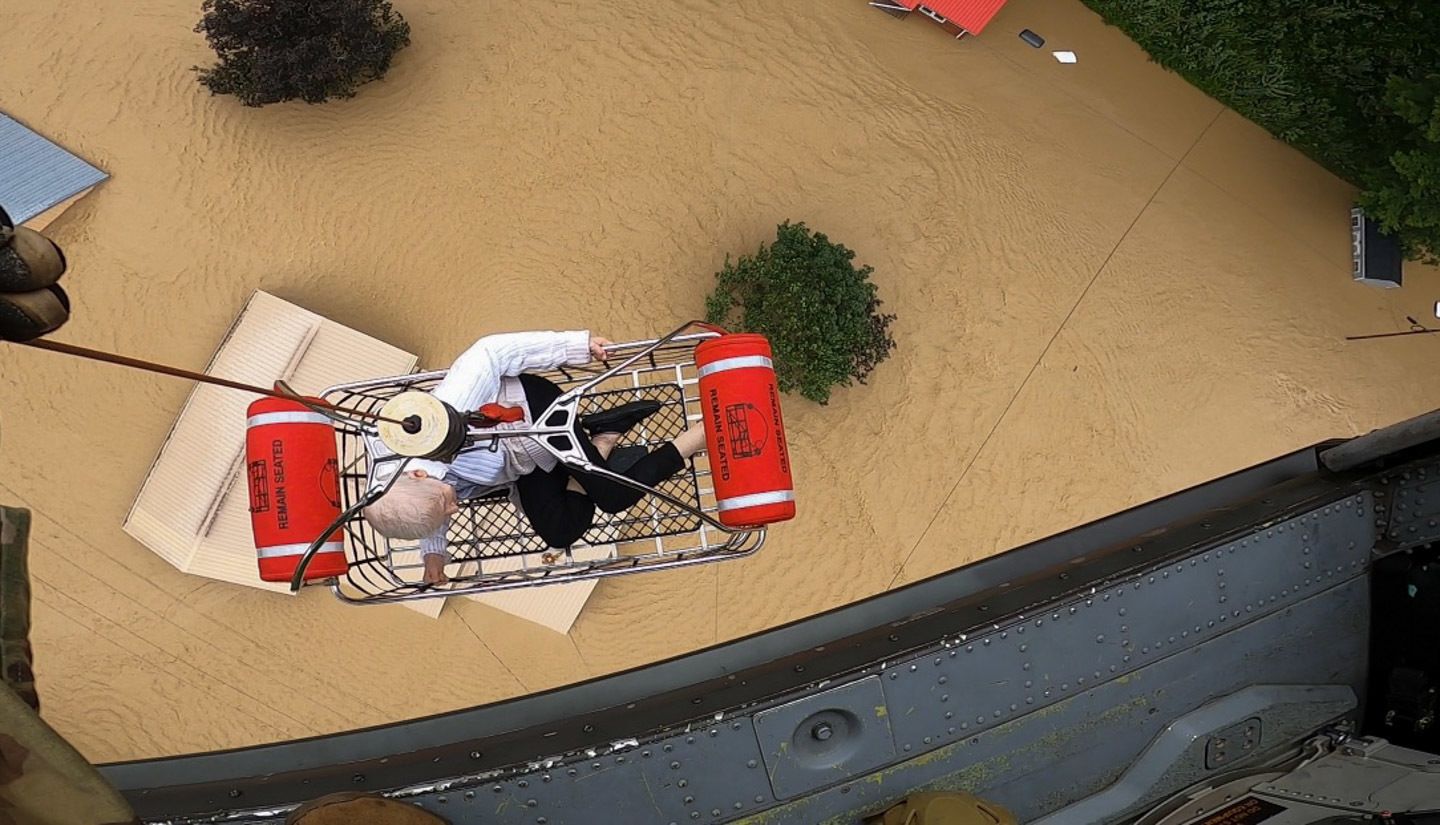
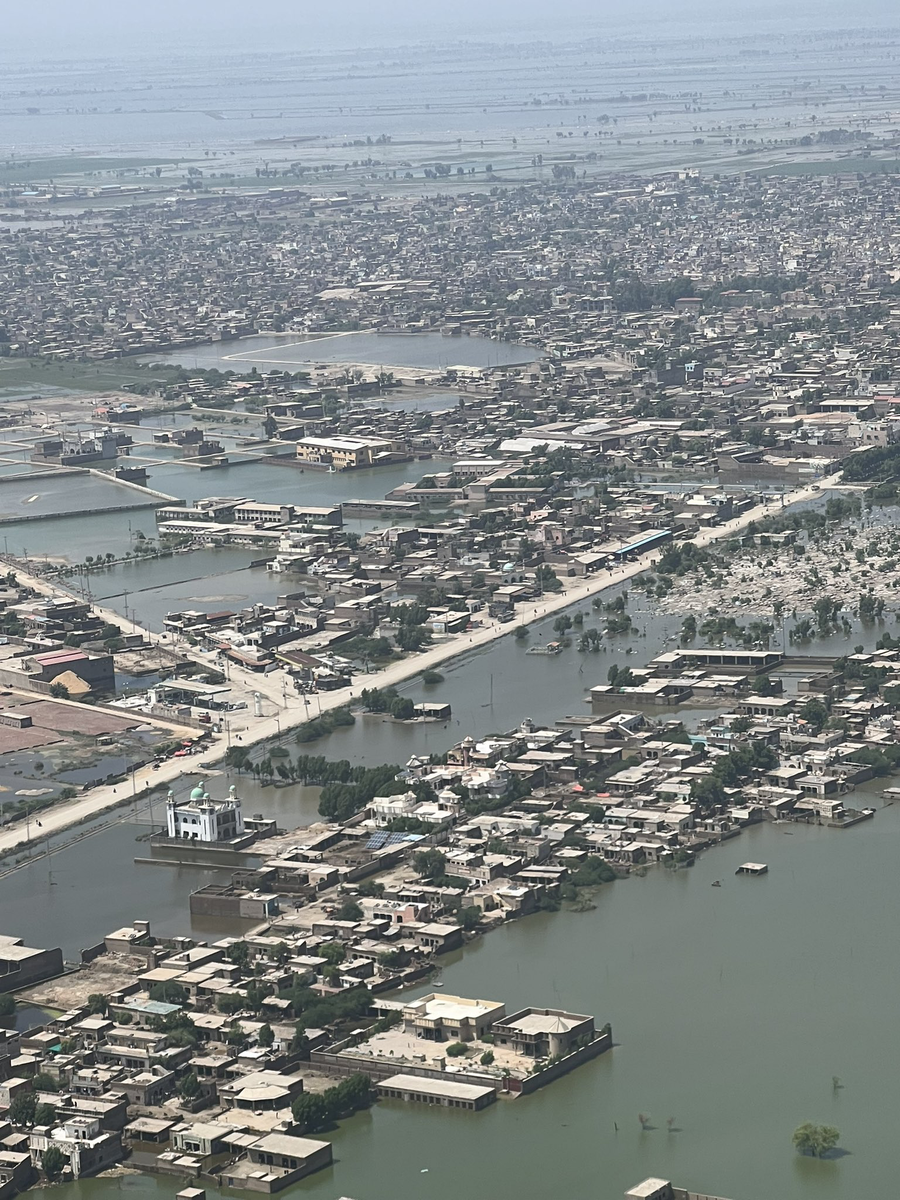
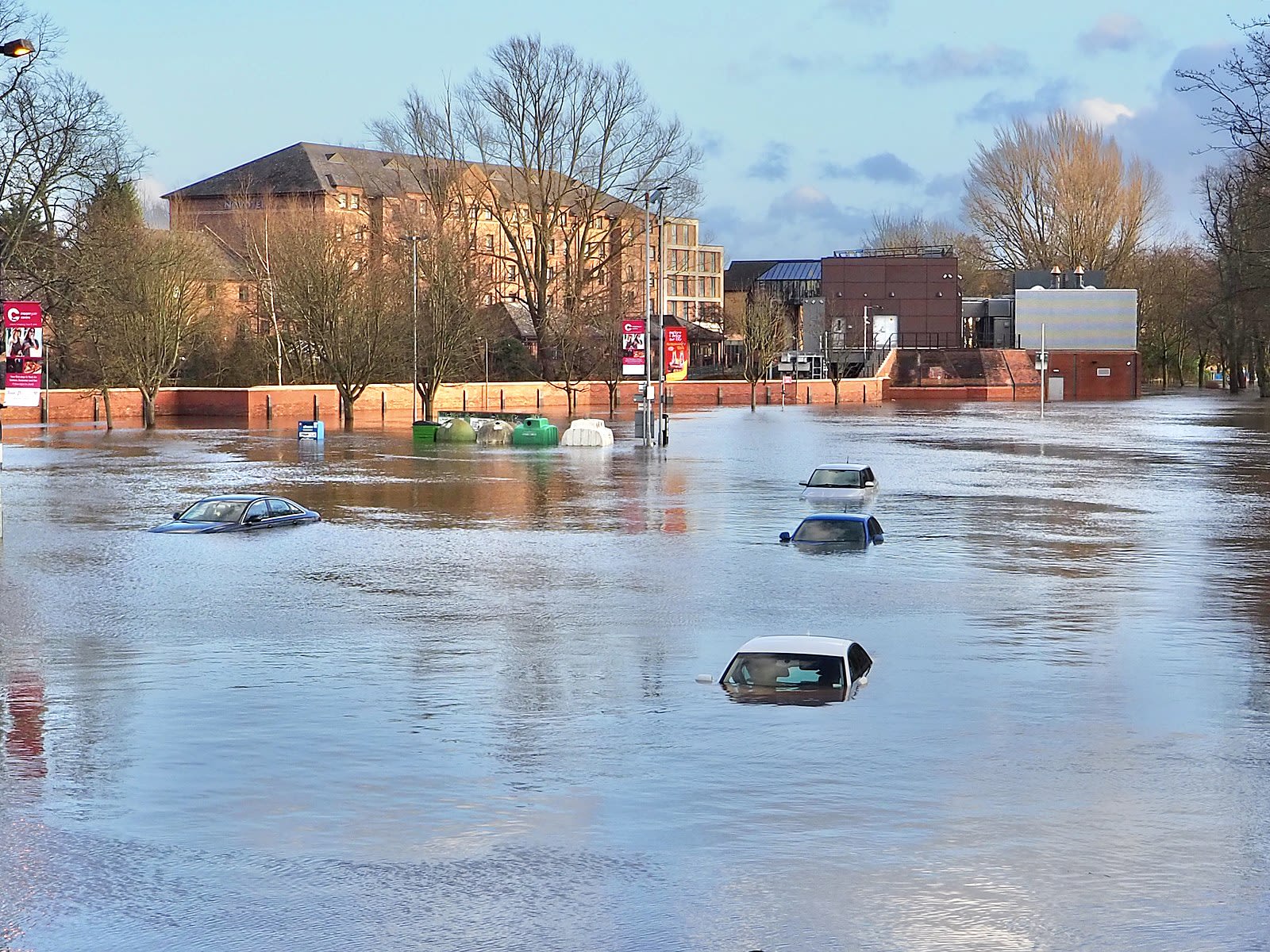

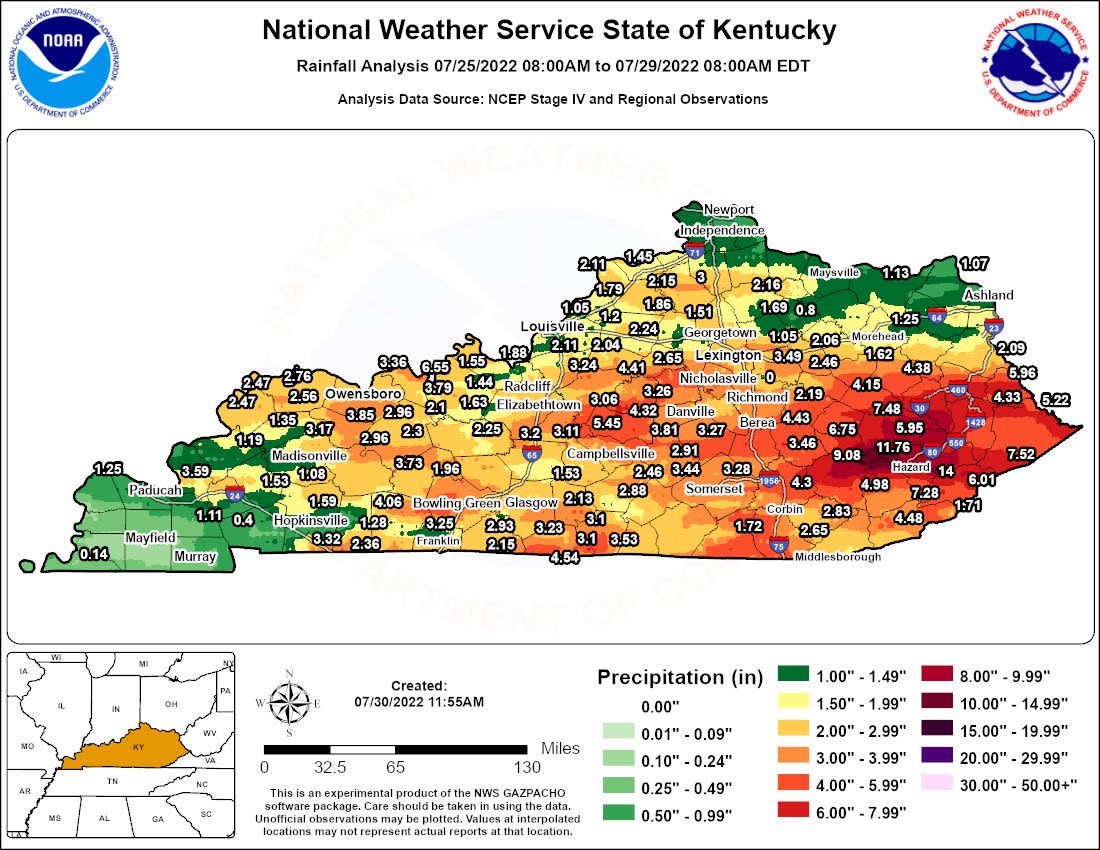

National Guard from Kentucky airlift a man after record-breaking floods. Photo courtesy of Wikimedia Commons.
National Guard from Kentucky airlift a man after record-breaking floods. Photo courtesy of Wikimedia Commons.

An aerial view of the destruction floods imposed on Sindh, Pakistan. Photo courtesy of Wikimedia Commons.
An aerial view of the destruction floods imposed on Sindh, Pakistan. Photo courtesy of Wikimedia Commons.

Cars abandoned in flooded waters during a flood in York, England. Photo courtesy of Wikimedia Commons.
Cars abandoned in flooded waters during a flood in York, England. Photo courtesy of Wikimedia Commons.

Floods ravage residential areas in Corinda, Australia. Photo courtesy of Wikimedia Commons.
Floods ravage residential areas in Corinda, Australia. Photo courtesy of Wikimedia Commons.

The National Weather Service observed rainfall analysis of Kentucky over a span of four days (July 25-29). Photo courtesy of Wikimedia Commons.
The National Weather Service observed rainfall analysis of Kentucky over a span of four days (July 25-29). Photo courtesy of Wikimedia Commons.
On the other side of the spectrum, Massachusetts continues to suffer through a drought. The city of Boston recorded its fourth-hottest and fourth-driest summer months this year. Due to the lack of water, the state of Massachusetts plunged headfirst into one of the worst droughts in state history. On August 18, U.S. Drought Monitor elevated concerns by declaring that 94 percent of the state was in either “severe or extreme conditions.”
Massachusetts was not the only area impacted by a lack of water.
All summer long, Western Europe grappled with extreme heat. Temperatures in July soared to 105 degrees Fahrenheit in Paris, the second hottest day in Paris’s history. Not to be outdone, London hit 104 degrees, the hottest day in the history of the United Kingdom.
With the repetitive heat waves surging through Europe, infrastructure and health failed miserably. Roads collapsed, and thousands died from heat stress. The heat was amplified in Europe because most residents do not have air conditioners, due to the usually temperate weather.
Wildfires roared in France’s Gironde region. In July, a fire broke out in the famed wine country, blazing through 20,000 hectares and displacing 40,000 residents. A month later, the area burned again, with 10,000 citizens evacuated. The scene was tragic.
One homeowner Valentine Dupy described the chaos saying, "It was like an apocalypse. Smoke everywhere ... and planes throwing orange powder onto the fire."
Reuters also reported that Dupy took pictures of her home before being evacuated "just in case something happens."
In the aftermath, Hostens mayor Jean-Louis Dartiailh told Radio Classique, “The area is totally disfigured. We're heartbroken; we're exhausted… [This fire] is the final straw."
With all the heat, a drought dried up rivers and seas. Waters receding in the Danube River revealed World War II warships in Serbia and a lack of water in the Tiber uncovered ancient Roman bridges.
And recently, California has been sweltering in a record-breaking heatwave. Last week, Los Angeles reached triple-digits, and San Diego, known for its mild temperature year-round, hit 97 degrees. On September 2, Death Valley saw the hottest temperature recorded at the National Park in September, 127 degrees.
Because of the heat, the stress shifts to California’s power grid. Al Jazeera reported that California officials estimated that 51,000 megawatts would be used last Tuesday. The amount of energy used pushed California’s energy system to the brink of crisis.
Climate change can be connected to each of these events. With every celsius degree that the Earth warms, water vapor increases by about seven percent. The National Environmental Education Foundation (NEEF) explains that an increase in water vapor would lead to a breach in the water cycle. Therefore, some areas can see several rounds of rain and catastrophic flooding while other regions stall in droughts.
If the summer of 2022 does not scream 'climate crisis,' I am not sure what will.
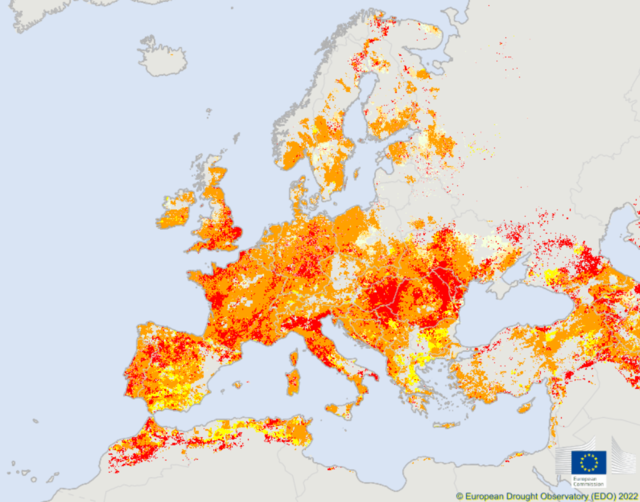
Alerts of droughts in Europe on July 21, courtesy of the European Drought Observatory.
Alerts of droughts in Europe on July 21, courtesy of the European Drought Observatory.

Greenery dying at Greenwich Park in London after weeks of high heat and dry conditions. Photo courtesy of Wikimedia Commons.
Greenery dying at Greenwich Park in London after weeks of high heat and dry conditions. Photo courtesy of Wikimedia Commons.
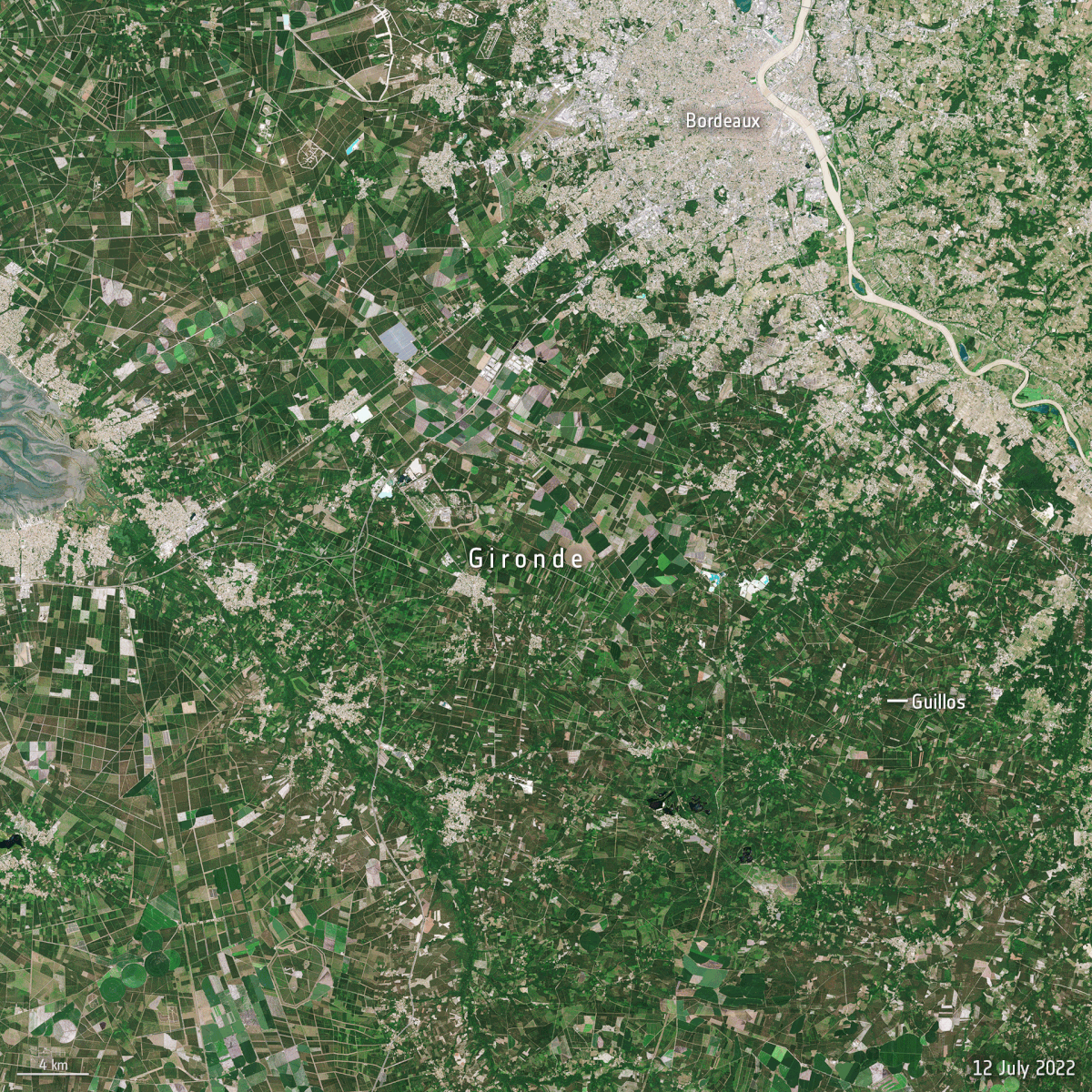
The wildfires in the Gironde region in France. Photo courtesy of Wikimedia Commons.
The wildfires in the Gironde region in France. Photo courtesy of Wikimedia Commons.
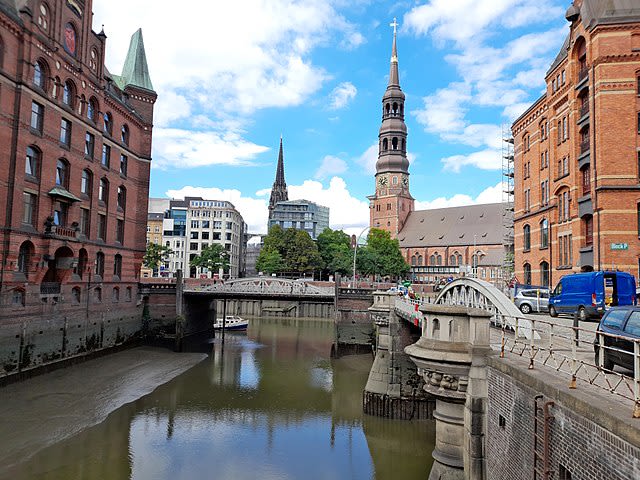
A river in Hamburg suffers from drought. Photo courtesy of Wikimedia Commons.
A river in Hamburg suffers from drought. Photo courtesy of Wikimedia Commons.
Climate policies stalling in Congress is a worrying trend. While Senate Democrats negotiated a deal with Senator Joe Manchin on the ‘Inflation Reduction Act,’ the legislation was derailed because Senator Manchin refused to cooperate, leading to a weaker bill.
When Manchin agreed to the climate and health care bill, a leaked draft showed support for fossil fuel initiatives such as the Mountain Valley Pipeline, undermining environmental protection and leaving environmentalists duped.
Manchin’s tainted terms shouldn’t come as a surprise. Manchin gets filthy rich from the coal industry. The deal should be seen as a wealth attempt from Manchin.
Yet, even with Manchin’s approval, the reworked bill faced stiff opposition from Congressional Republicans. Zero Republicans voted for the measure. Zilch. However, with Democratic leadership in both chambers, the bill passed both chambers.
Public Citizen shared that 94 percent of lobbyist money from Big Oil ends up in Republican hands. So how can I blame Republicans for their greed?
The Senate in general amasses a great amount of wealth from fossil fuels. 28 Senators own up to $12.6 million of fossil fuel funding.
Another important bill yet to leave the committee is the Break Free From Plastic Pollution Act (BFPA) to limit plastic pollution. The act was introduced last year. Skilled lobbying from corporations such as Coca-Cola brought down the bill. Combined, Congressional members hold $8.76 million to $35.6 million in stock of companies lobbying against the plastic bill.
California took a massive step forward this summer, requiring plastic makers to pay for recycling or reduce single-use plastic altogether. With the California bill, it is high time to take action on plastic pollution. I wonder if Congress will answer the call.
The Supreme Court does not seem to help either. On June 30, the Supreme Court ruled 6-3 that the Environmental Protection Agency cannot set regulations on carbon-based emissions.
Limiting the EPA will bring consequences if Congress continues the streak of inaction.
As a teenager, I am livid. We are talking about my future here. Not Clarence Thomas’s nor Mitch McConnell’s. Leaders are elected to represent our nation, not themselves.
Did Kentucky Republicans see their constituents drown in record-breaking floods? I doubt they took notice, just as Senator Ted Cruz abandoned Texans in Cancun amidst the freeze of 2021.
The concerning trend of inaction puts my future in jeopardy. We cannot allow climate change to continue its rampage on humans. The future deserves a healthy world like the past.
In November, politicians across the nation will jockey for coveted positions at the state and federal levels. With the drastic disasters of the summer, we must make it clear to politicians that we want climate change to be taken seriously—at all stages of government.
